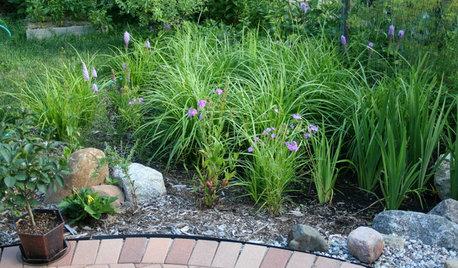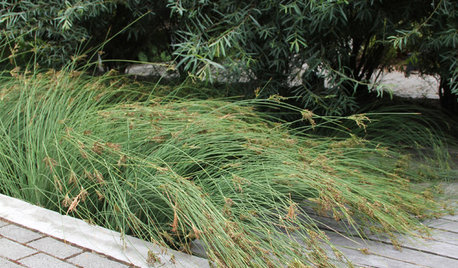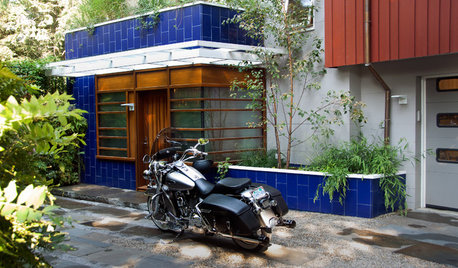Excessive Rain & Container Nutrients
figtreeundrgrnd
17 years ago
Related Stories

LANDSCAPE DESIGNHow to Site and Size a Rain Garden for Your Landscape
Installing a rain garden is an excellent way to reduce runoff and return water to its source
Full Story
GARDENING GUIDESProtect a Precious Resource With a Rain Garden
Promote pure water and a beautiful landscape with a garden design that makes the most of the rain
Full Story
FARM YOUR YARDHow to Grow Vegetables in Containers
Get glorious vegetables and fruits on your patio with a pro’s guidance — including his personal recipe for potting mix
Full Story
GREEN BUILDINGJust Add Water: Rain Barrel Magic
Take your rainwater storage from practical to beautiful with a new breed of design-friendly rain barrels
Full Story
LANDSCAPE DESIGNHow to Shape a Rain Garden and Create the Right Soil for It
Learn how to grade, lay out and amend the soil in your rain garden to support your plants
Full Story
HOUZZ TVHouzz TV: How to Install a Rain Barrel
This DIY tutorial shows how easy it can be to capture rainwater from your roof to use in your garden later
Full Story
CONTAINER GARDENS3 Steps to Creating Quick, Easy and Colorful Succulent Containers
Take a bright container, add a colorful succulent or two and have a professional, summery design in minutes
Full Story
SAVING WATERStormwater Planters Manage Runoff in Small Gardens
Think of stormwater planters as container rain gardens
Full Story
MONTHLY HOME CHECKLISTSOctober Checklist for a Smooth-Running Home
You're due for some winterizing, like clearing rain gutters and stowing swimsuits — but leave time for a fun project
Full Story
GARDENING GUIDES10 Solutions for Soggy Soil
If a too-wet garden is raining on your parade, try these water-loving plants and other ideas for handling all of that H2O
Full Story







username_5
figtreeundrgrndOriginal Author
Related Professionals
Reading Landscape Architects & Landscape Designers · Fort Lee Landscape Architects & Landscape Designers · Prairie Ridge Landscape Architects & Landscape Designers · Norwood Landscape Contractors · Bedford Landscape Contractors · Burien Landscape Contractors · Holtsville Landscape Contractors · Snoqualmie Landscape Contractors · Tigard Landscape Contractors · Atlantic Beach Window Contractors · Charlotte Fence Contractors · Mill Valley Fence Contractors · North Miami Beach Fence Contractors · Salt Lake City Fence Contractors · Zion Fence Contractorsdangsr2
utsharpie
tapla (mid-Michigan, USDA z5b-6a)
utsharpie
rhizo_1 (North AL) zone 7
utsharpie
tapla (mid-Michigan, USDA z5b-6a)
username_5
utsharpie
jenny_in_se_pa
figtreeundrgrndOriginal Author
utsharpie
rhizo_1 (North AL) zone 7
utsharpie
tapla (mid-Michigan, USDA z5b-6a)
utsharpie
utsharpie
utsharpie
jenny_in_se_pa
figtreeundrgrndOriginal Author
utsharpie
rjm710
username_5
tapla (mid-Michigan, USDA z5b-6a)
utsharpie
jenny_in_se_pa
figtreeundrgrndOriginal Author
rhizo_1 (North AL) zone 7